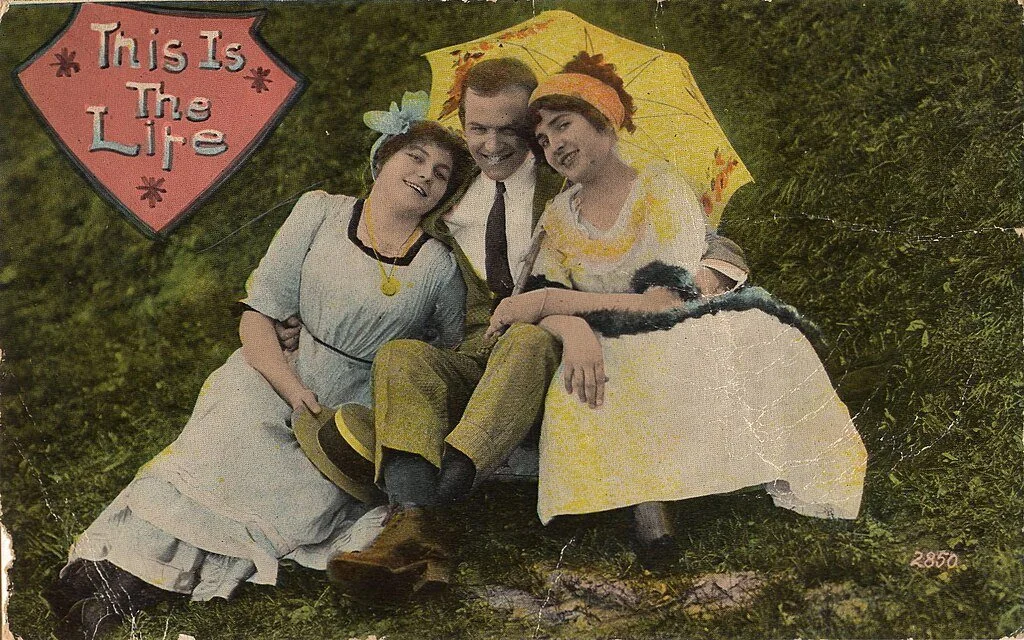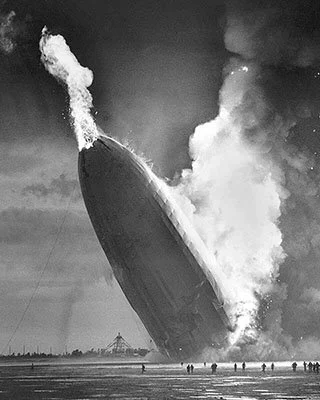28 July 2025
Throuple is a good example of a word that has been coined multiple times, by multiple people, over the years. A blend of three + couple, it can refer to any grouping of three, but more commonly it is used to describe a polyamorous relationship involving three people, a ménage à trois, although that latter term can also refer to a single sexual encounter involving three people. Throuple always refers to a longer-term relationship that extends beyond just sex.
The earliest use of throuple that I have found is from 11 July 1994 on a Unitarian Universalist email list. That might seem an odd source for a sexually charged term, but in context it is less surprising. The topic was the difficulty of raising children in a nuclear family model:
As a result, I am find myself becoming increasingly interested in the notion of polyamorous relationships for the sake of our own sanity as parents attempting to raise children, as well as for the sanity of two children being raised by stressed-out parents of the so-called “normal nuclear family” structure.
I also tend to view the issue of sex in a polyamorous relationship as being somewhat irrelevant when it comes to the children in the situation. Most of the time I would imagine that sex would not even be much of an issue at all (except for the gossip mongers and busy-bodies for whom such a situation would provide fuel enough to have people thinking that such a relationship would consist of non-stop sexual encounters). These are among the same sorts of jealousy-based streotyping [sic] and perverted imaginings which undoubtedly hinder most any non-traditional couple (or in this case throuple or more).
This appearance of the word seems to be an outlier, as I can find no other uses of this sense until 2012, although I think it’s safe to assume that the word was relatively widespread in oral use. After all, it’s a natural blend, and throuples have existed since time immemorial. (The Oxford English Dictionary dates English use of ménage à trois to 1862.)
I also found a use of throuple in the general sense of a group of three on the Usenet group alt.tv.red-dwarf from 11 December 1997:
There’s so much great stuff on Daytime telly, thesedays. The really usefull show’s great, so’s supermarket sweep, and of course teletubbies, and schools programs are great too! Then there’s something on BBC2 at about one. I recently had a throuple of days of school, and I quite enjoyed myself (except i had a disgusting cold, which ruins things.)
Like the polyamorous sense, this general use has also undoubtedly been in oral use for ages.
The next instance of the polyamorous sense that I have found is in Allison Nichols’s 2008 novel Contents Under Pressure, describing a relationship between three queer people, Kenneth, Barbie, and Mango. Kenneth and Mango are men, and Barbie is either a drag queen or a transwoman; the novel does not clarify. It is hardly a positive depiction of such a relationship in any case:
She killed Mango for the only motive older than money—love. Seems she, Mango, and Kenneth were a throuple. A couple plus one. Kenneith and Mango had started dating right after the show had moved to Lucky. But once Barbie arrived in Provincetown, Kenneth became drawn to her as if they were made for each other. Mango was none too pleased at sharing Kenneth’s affection, but over time, the three came to tolerate, if not embrace, one another.
The polyamorous sense of throuple starts appearing commonly in print publications in 2012. There is this use in reference to the television series The Big C (2010–13) in the New York Daily News of 12 May 2012:
IN THE BROADWAY musical “Shrek,” Brian d’Arcy James played an ogre who was green. On “The Big C” Sunday night (Showtime, 9:30 p.m.), his racy guest-star role has him getting blue. He plays Tim, a married psychotherapist who, along with his wife, Giselle (Tammy Blanchard), initiates a sexy three-way tryst with Sean (series regular John Benjamin Hickey). Says James, 43, who lives on the upper West Side with his wife and daughter, “I never thought I'd be making out—on the set or off—with John Benjamin Hickey.” No matter. That's exactly what he does in the series, which looks at life and death in a darkly comic way. “Tim is wide open to defining who he is sexually,” says James. “The setup is that Tammy's and my character consider a relationship with Sean. We're calling it a throuple.” (“Threelationship” also works.)
A few months later, on 30 July 2012, the New York Post had this about New York magazine’s upcoming “sex” issue:
New York’s double issue is devoted to “Sex: the multiplicity of Desire.” Predictably there’s an element of Ivy League-flavored reportage, with a sex party hostess who “finds the terminology ‘sex party’ reductive and degrading.” There’s a piece on a three-man “throuple” that produces gay porn, but whose “home life seems positively wholesome,” with remarkably little interpersonal tension. Not much insight is gleaned, however, into how the participants manage to pull this off, no pun intended.
The New York magazine piece about the gay throuple is in the 6 August 2012 issue, which had sex as the issue’s theme:
And here lies a second explanation for Benny’s—and, by extension, CockyBoys’—microfame. Adrian explains that he is driving upstate to the house that he shares with Benny, who is now puppyishly tugging on Adrian’s hand, and Jason, who is the CEO of CockyBoys. The three men have been together for just over four years—a “throuple,” Benny calls it, putting air quotes around the dumb word. Their throuplehood is more or less a permanent domestic arrangement. The three men work together, raise dogs together, sleep together, miss one another, collect art together, travel together, bring each other glasses of water, and, in general, exemplify a modern, adult relationship.
Except that there are three of them.
One can often date the widespread use of a sex-related term to its use by sex-advice columnist Dan Savage, and he uses throuple in the 9 January 2013 column, Savage Love. In it he references the New York magazine piece, makes the point that heterosexuals form throuples too, and opines more favorably on such arrangements:
Some gay people think throuples are odd, some think they’re unremarkable, and some think they’re sensible. And some gay people—some dumb ones—think gay throuples are bad PR at a time when gay couples are fighting for the right to marry. But our fight is for equal rights, not double standards, and no one argues that straight marriage should be banned because of all the straight throuples, quadles, quintles, sextetles, etc. out there.
[…]
Throupledom presents unique challenges: Major life decisions require buy-in from three people; two can gang up against one during arguments; the partners who were coupled before the third came along may treat the third as a junior partner, not an equal partner, etc. But throupledom presents unique benefits, too: another set of hands to help around the house, another income to pay down the mortgage, another smiling face to sit on, etc. And it’s not like coupledom is a surefire recipe for success. Half of all marriages—those traditional “one man, one woman, for life” marriages—end in divorce. Yet discussions of throupledom all seem to begin with the assumption that coupledom is a self-evidently more stable arrangement. Maybe it is, maybe it isn’t. I’d like to see some research comparing throuples to couples before I accept that premise.
Use of throuple in print becomes much more common after this.
Sources:
Dziemianowicz, Joe. “D’Arcy James Scores a ‘Big C’ Triple Play.” Daily News (New York), 12 May 2012, 4B. ProQuest Newspapers.
McLure, David. “Children and Family Structure.” UUS-L (listserv), 11 July 1994. Google Groups.
Nichol, Allison. Contents Under Pressure. Walker, Louisiana: Intaglio, 2008, 176. Archive.org.
Ouroborous**. Usenet: alt.tv.red-dwarf, 11 December 1997. Google Groups.
Oxford English Dictionary Online, September 2001, s.v. ménage à trois, n.
Savage, Dan. “Gay Panic Attack.” Savage Love, 9 January 2013.
“Skin Magazines.” New York Post, 30 July 2012, 26/3-4. Readex: America’s Historical Newspapers.
Young, Molly. “He & He & He: Benny Morecock Is in a ‘Throuple’ with Two Partners. Their Family Business Is a Gay-Porn Company in Long Island City. The Cleavers They’re not—and Yet Their Home Life Seems Positively Wholesome.” New York (magazine), 6 August 2012. ProQuest Magazines. [Morecock is Benny’s nom de porn, not his actual surname.]
Photo credit: unknown photograph, c. 1910. Wikimedia Commons. Public domain image.






